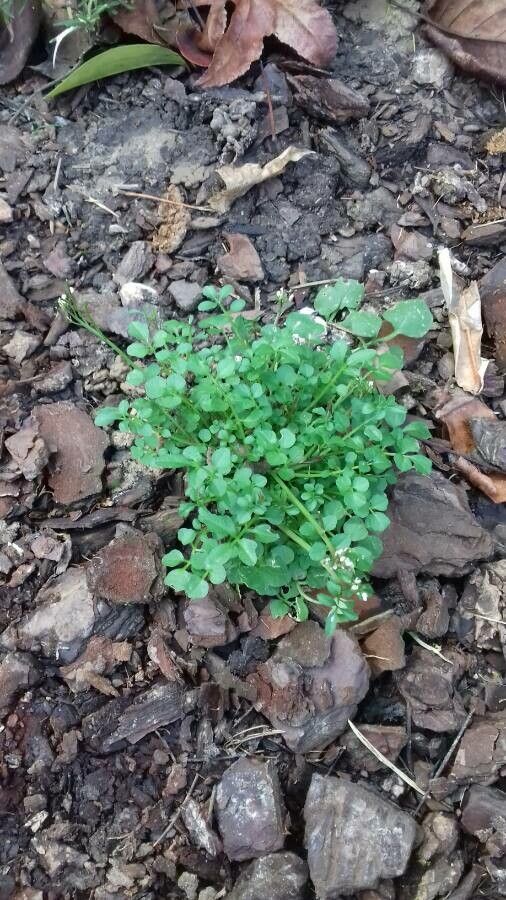## Greater Bittercress: A Comprehensive Guide
Greater Bittercress (*Cardamine impatiens*), a member of the Brassicaceae (mustard) family, is a fascinating and widespread plant known for its rapid growth and distinctive peppery flavor. While often considered a weed, it's also a valuable edible plant and a fascinating subject for botanical study. This guide delves into its identification, habitat, cultivation, and more.
### Identification
Greater Bittercress is easily identified by its characteristic features. It's an annual or biennial plant, typically reaching heights of 10-40cm. The leaves are pinnately divided, meaning they have multiple leaflets arranged along a central stem, with rounded, almost kidney-shaped terminal leaflets. The stems are often reddish in color. Its tiny white flowers, with four petals arranged in a cross shape, bloom from spring through early summer. The seed pods, which are slender and erect, are a key identification feature. These pods contain numerous small, dark brown seeds that readily disperse when ripe.
### Habitat and Growth
Greater Bittercress thrives in a variety of habitats, demonstrating its adaptability. It prefers moist, fertile soils and is commonly found in disturbed areas, along roadsides, in fields, and gardens. It's particularly abundant in areas with ample sunlight, although it can tolerate partial shade. This plant is a ruderal species, meaning it thrives in areas disturbed by human activity.
### Cultivation
While often unwanted in cultivated gardens, Greater Bittercress can be successfully grown. Plant seeds in moist, well-drained soil in spring or fall. Ensure the soil stays consistently moist but not waterlogged. Given its rapid growth, thinning may be necessary to prevent overcrowding. It can self-seed readily, so be prepared for its prolific nature.
### Uses
Greater Bittercress is a valuable edible plant, with leaves possessing a peppery, slightly bitter taste similar to cress. Young leaves can be added to salads, sandwiches, or used as a garnish. It's a rich source of vitamins and minerals. However, it's crucial to accurately identify the plant before consumption, as some members of the Brassicaceae family are toxic.
### Ecological Importance
Greater Bittercress plays a role in the ecosystem as a food source for various insects and pollinators. Its rapid growth and ability to colonize disturbed habitats contribute to soil stabilization and nutrient cycling. It demonstrates the resilience of nature, even in human-altered environments.
### Controlling Greater Bittercress as a Weed
For those who consider it a weed, hand-pulling before seed production is the most effective control method. Mulching can also help suppress its growth. However, given its rapid seed production, persistent management is often required.
### Conclusion
Greater Bittercress is more than just a weed; it's a fascinating plant with edible and ecological value. Understanding its characteristics and growth habits allows for its appreciation and effective management, depending on the context. Its presence highlights the dynamism of the plant world, adapting and thriving in diverse environments.
Greater Bittercress: Identification, Growth & Care

Frequently Asked Questions
How to identify Greater Bittercress?
Identify Greater Bittercress by its pinnately divided leaves with rounded terminal leaflets, reddish stems, tiny white flowers in a cross shape, and slender, erect seed pods containing small, dark brown seeds.
Is Greater Bittercress edible?
Yes, young leaves of Greater Bittercress are edible and have a peppery, slightly bitter taste. However, proper identification is crucial before consumption, as some look-alike plants may be toxic.


